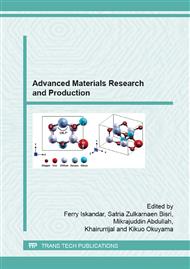p.15
p.19
p.23
p.27
p.32
p.37
p.41
p.47
p.53
The Influence of Glucose Concentration to Resonant Wavelength Shift of Polymer-Based Microring Resonators
Abstract:
Microring resonators (MRRs) is a compact and multi-functioned device which is mainly characterized by free spectral range (FSR) and quality factor (Q-factor). In this paper, the influence of glucose concentration to the resonant wavelength shift of MRRs is presented. The calculation was carried out using semi-numerical method for different values of FSR and Q-factor. The parameters used in the calculation including incident wavelength, ring radii of circular waveguide, gap sizes between circular and straight waveguides, the dimension of both waveguides, and refractive index of polymer, SiO2 and glucoce solution. The results show that glucose affects the resonant wavelength shift for each values of FSR and Q-factor. The increase of the glucose concentration causes the increase of the resonant wavelength shift, therefore this polymer-based MRR’s can be used for glucose sensing application.
Info:
Periodical:
Pages:
32-36
Citation:
Online since:
July 2015
Price:
Сopyright:
© 2015 Trans Tech Publications Ltd. All Rights Reserved
Share:
Citation:


